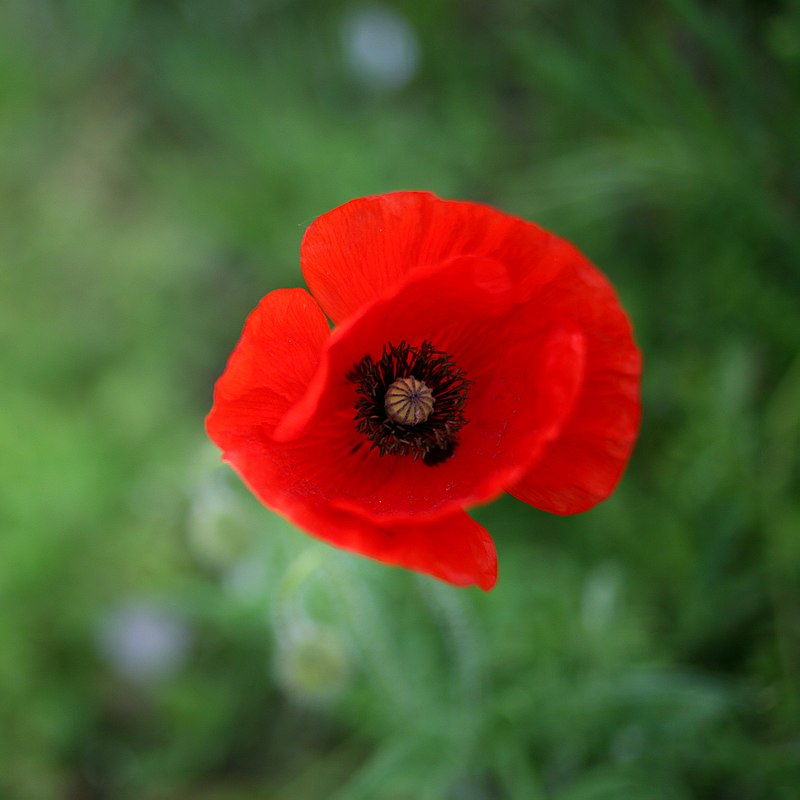
Also known as common poppy and Flanders poppy, this annual wildflower is native from Africa to temperate and tropical Asia and Europe. It is a member of the poppy family, Papaveraceae, that also includes bleeding heart and corydalis. The plant grows 8-18″ tall and has hairy, irregularly pinnate leaves that are up to 6″ long and have coarsely-toothed margins. The flowers appear on bristly-hairy stems from late spring to mid-summer and are up to 4″ across. They have 4-6 overlapping papery petals with a black blotch at their base and are usually red but may be purple or white. The flowers give way to a many-seeded capsules that explode their content when ripe. The seed lie dormant in the soil for up to 80 years and germinate when the soil is disturbed. This phenomena produced memorable results during WW I, especially in Flanders, and inspired the symbol of the flower to honor the dead and sacrifice of lives in war. As beautiful as the poppies are, their prolific seed production with long life in the soil has led them to become weedy in some places. Corn poppy is a good choice for beds and borders, as well as for cottage, rock and wildflower gardens. The genus name, Papaver, is the ancient Latin name for the plant. The specific epithet, rhoeas, is the Greek word ῥοιάς (rhoiás), meaning red and refers to the flower color.
Type: Annual
Bloom: Bright red flowers with black blotch at base from late spring to mid summer
Size: 8-18″ H x 6-12″ W
Light: Full sun with light afternoon shade in hot areas
Soil: Average, medium moist, well drained; does not tolerate overly moist or dry soils.
Hardiness: Zones 3-10
Care: Deadhead to prolong bloom
Pests and Diseases: None of significance
Propagation: Seed
Companion Plants: Cornflower (Centaurea cyanus), columbine, Salvia ‘Caradonna’
Outstanding Selections:
Shirley poppy
‘Evelina’ (almost black)
Photo Credit: Paolobon140 Wikimedia Commons